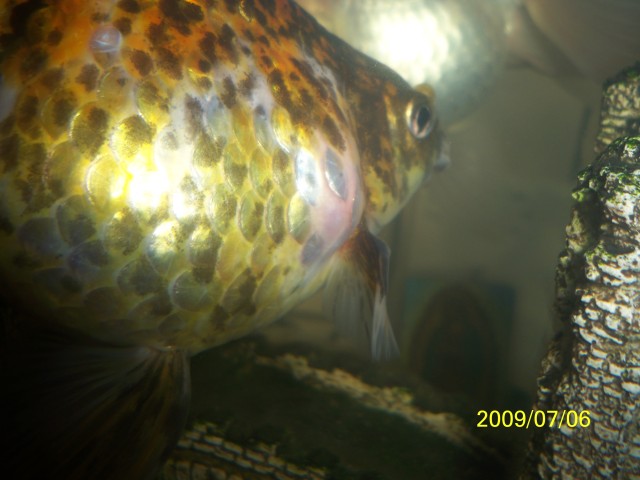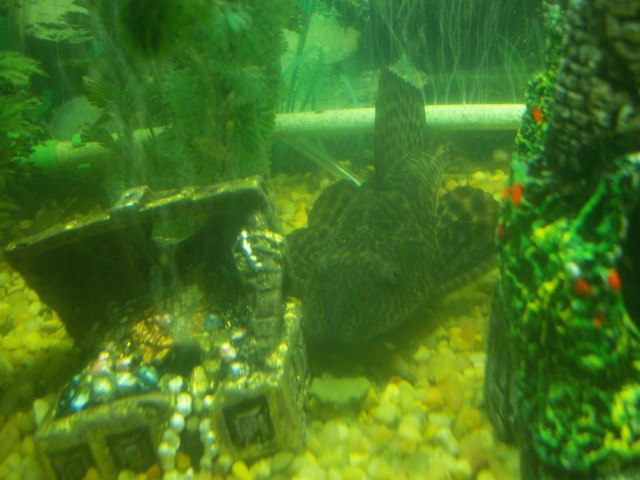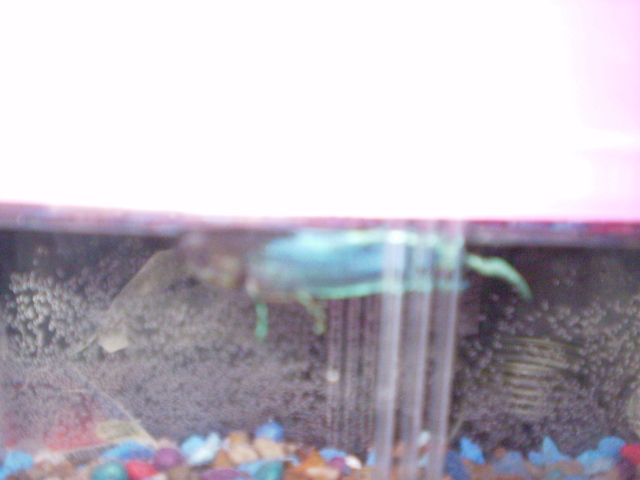QuestionHello thanks in advance for your help...
I haev a new tank...2 weeks old. I haven't had fish in years, so I am a little in the dark here and I can't find the answers locally.
I live in China...and finding everything I need, especially help is most difficult.
The Guys brought the tank and all the stuff...did everyting to set it up...all the chemicals plants, fish etc.
the fish are what i would have called Mollies but they are not black...orange, yellow & white (1.5 inches). Then some smaller orange fish (1/2 inch) with a black area near the tail.
I also ahve some angel fish..but also some fish that have the angle fish look but are black?silver with a yellow ridge from the head to the dorsal fin...they also come in silver with black, and still have the yellow...very aggressive. In fact I have seen these guys kill 2 fish myself..almost sucking the guts from them.
One day (about 3-4days old at the time) the tank was cloudy when we wokeup in the morning...I added a little clarifier and the next day it was clear.
But, the fish seemed to struggle all day especially anthing that was gold...small or large fish. And it began the next day...we started losing fish, 1-2 a day...but yesterday we lost 7, today about 5...and our first non-orange fish. A Blue discus shaped fish that I have not seen in the States.
I thought that the aggressive angle fish were killing them..but I kinda doubt they are killing 5-7 per day? And certinly not this big fish....? When I see those fish that I think are dying..they seem to be losing their color and look as someone laboring to breath...some flash, or scratch form time to time..but most don't they just seem lathargic and then die. We started out with about 40 fish...half of them orange and the deaths seem to have stayed in those fish...and those are the ones that I often see struggling prior to death. We have lost about 20 fish...19 of them 0range.
I know that there are not a lot of facts here..and I cant give your water information..but if you could give me a direction to go I would be most thankful...I have not expert to turn to here.
Blessings
Richard Gregory
China
AnswerHi Richard;
The tank was probably started out with WAY too many fish. You only want to have one fish for every ten gallons of tank water for the first 6 to 8 weeks. This is to allow the fish to survive the break-in period. Right now, there are so many toxins in the water from their own wastes that the fish are literally suffocating from burned gills. As the toxins develop the beneficial bacteria in the gravel and the filter are trying to mature enough to handle all of it. Since the bacteria is too young, the fish are exposed to their own wastes. Cloudiness of the water is a symptom of all this too.
Immediately remove 25% of the water and replace it with fresh water. Remove 25% every day after that for about 4 days. This will get the toxins down to a tolerable level for the fish, without shocking them too much from new water chemistry. If you can get some test kits, test the ammonia, nitrIte, and pH. Don't worry about nitrAte (different than nitrIte) right now. It won't show up for at least another month or so.
Here is my article on new tanks to help you understand this whole crazy process;
**********
New Tank Syndrome or Break-in Period
So you have a new tank and you filled it up, put the filter together, mounted the heater into place and turned on the lights. You have all the plants and decorations where you want them....
You are ready for fish.
But, your filter is not ready for a full tank of fish yet.
The filter is running and moving the water and cleaning out crud, right? Of course!
But a very important part of your filter is the part you can't see. An aquarium filter removes the larger visible stuff, but it also must remove the dissolved fish waste that turns into ammonia in the water. To do this, special bacteria must grow in the filter system and on the particles of gravel in the bottom of your tank. This process occurs even on a limited scale in little fish bowls that have no filter in them.
This is "New-Tank Syndrome" or the "Break-in Period". The entire process takes 6 to 8 weeks to complete because these "nitrifying" bacteria grow quite slowly.
Start off with only two hardy fish for every ten gallons of water and don't add more until the 6 to 8 weeks has gone by. Hard to be patient, but it is worth it to keep your fish alive and healthy. As a matter of fact, the bacteria cannot develop without fish in the tank. You can let that tank sit forever without fish in it, but as soon as the first fish goes in the process begins. Avoid changing the filter pads during break-in. This removes the bacterial colonies that are essential to a balanced aquarium. You can rinse the filter pad out in a container of aquarium water. This will preserve most of the bacteria colonies while still allowing your filter to flow freely. Even using bacteria additives and water conditioners when you first set up the tank will not make a tank cycle by itself. If there are no fish to provide food (fish waste) for the bacteria, the beneficial bacteria cultures will die and you will have to start the colonies all over again once fish are added to the tank.
Feed your new fish VERY lightly. Any excess food will cause additional waste your system cannot afford to have right now. If you see food floating around or lying on the plants and gravel after five minutes, too much food is going into the tank. Cut back a little each time you feed until it is ALL gone 5 minutes after you feed them.
During this "break-in period" your tank will become cloudy and milky looking. You may have to tolerate this for the entire break-in period but it is only temporary. Changing 25% of the water three times a week until the break-in period is over helps a great deal. Changing water reduces the ammonia and nitrites that rise while the bacteria continues to multiply. If ammonia and/or nitrites become too high, your fish will become stressed and possibly die. Use a good water conditioner when you replace the water and make sure it is the right temperature to avoid shocking your fish.
When the break-in period is over, do regular water changes and vacuum the gravel at the same time. A change of 25% every one to two weeks is a good rule of thumb. It simply needs to be done for healthy fish.
Following these guidelines will help you get your new tank on the right track.
**********
Followups welcome.
At Your Service;
Chris Robbins

 my goldfish has a red lump
Question
red bump on side of my
hi im joanna and I just
my goldfish has a red lump
Question
red bump on side of my
hi im joanna and I just
 sick pleco please help
Questionsick pleco
QUESTION: Hello I have a 29ga
sick pleco please help
Questionsick pleco
QUESTION: Hello I have a 29ga
 clamped fins,
QuestionQUESTION: I have a Betta that died recently. I
clamped fins,
QuestionQUESTION: I have a Betta that died recently. I
 Goldfish Issue
Question
Goldfish Image
Hi. My fish is a goldfis
Goldfish Issue
Question
Goldfish Image
Hi. My fish is a goldfis
 Upgrading my tank, want advice..
QuestionQUESTION: Hello April,
I got my first fish a c
Upgrading my tank, want advice..
QuestionQUESTION: Hello April,
I got my first fish a c